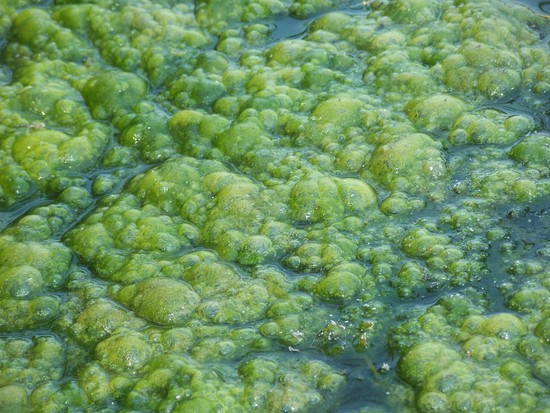

علم الكيمياء

تاريخ الكيمياء والعلماء المشاهير

التحاضير والتجارب الكيميائية

المخاطر والوقاية في الكيمياء

اخرى

مقالات متنوعة في علم الكيمياء

كيمياء عامة


الكيمياء التحليلية

مواضيع عامة في الكيمياء التحليلية

التحليل النوعي والكمي

التحليل الآلي (الطيفي)

طرق الفصل والتنقية


الكيمياء الحياتية

مواضيع عامة في الكيمياء الحياتية

الكاربوهيدرات

الاحماض الامينية والبروتينات

الانزيمات

الدهون

الاحماض النووية

الفيتامينات والمرافقات الانزيمية

الهرمونات


الكيمياء العضوية

مواضيع عامة في الكيمياء العضوية

الهايدروكاربونات

المركبات الوسطية وميكانيكيات التفاعلات العضوية

التشخيص العضوي

تجارب وتفاعلات في الكيمياء العضوية


الكيمياء الفيزيائية

مواضيع عامة في الكيمياء الفيزيائية

الكيمياء الحرارية

حركية التفاعلات الكيميائية

الكيمياء الكهربائية


الكيمياء اللاعضوية

مواضيع عامة في الكيمياء اللاعضوية

الجدول الدوري وخواص العناصر

نظريات التآصر الكيميائي

كيمياء العناصر الانتقالية ومركباتها المعقدة


مواضيع اخرى في الكيمياء

كيمياء النانو

الكيمياء السريرية

الكيمياء الطبية والدوائية

كيمياء الاغذية والنواتج الطبيعية

الكيمياء الجنائية


الكيمياء الصناعية

البترو كيمياويات

الكيمياء الخضراء

كيمياء البيئة

كيمياء البوليمرات

مواضيع عامة في الكيمياء الصناعية

الكيمياء الاشعاعية والنووية
Chemistry of Phosphorus
المؤلف:
........
المصدر:
Essential Physical Chemistry
الجزء والصفحة:
............
6-11-2018
1526
Chemistry of Phosphorus
Phosphorus (P) is an essential part of life as we know it. Without the phosphates in biological molecules such as ATP, ADP and DNA, we would not be alive. Phosphorus compounds can also be found in the minerals in our bones and teeth. It is a necessary part of our diet. In fact, we consume it in nearly all of the foods we eat. Phosphorus is quite reactive. This quality of the element makes it an ideal ingredient for matches because it is so flammable. Phosphorus is a vital element for plants and that is why we put phosphates in our fertilizer to help them maximize their growth.
Phosphorus plays a big role in our existence but it can also be dangerous. When fertilizers containing phosphorus enter the water, it produces rapid algae growth. This can lead to eutrophication of lakes and rivers; i.e., the ecosystem has an increase of chemical nutrients and this can led to negative environmental effects. With all the excess phosphorus, plants grow rapidly then die, causing a lack of oxygen in the water and an overall reduction of water quality. It is thus necessary to remove excess phosphorus from our wastewater. The process of removing the phosphorus is done chemically by reacting the phosphorus with compounds such as ferric chloride, ferric sulfate, and aluminum sulfate or aluminum chlorohydrate. Phosphorus, when combined with aluminum or iron, becomes an insoluble salt. The solubility equilibrium constants of FePO4 and AlPO4
are 1.3x10-22 and 5.8x10-19, respectively. With solubility's this low, the resulting precipitates can then be filtered out.

Figure 1. Phosphates can lead to excessive algae growth, which can be undesirable
Another example of the dangers of phosphorus is in the production of matches. The flammable nature and cheap manufacturing of white phosphorus made it possible to easily make matches around the turn of the 20th century. However, white phosphorus is highly toxic. Many workers in match factories developed brain damage and a disease called "phosphorus necrosis of the jaw" from exposure to toxic phosphorus vapors. Excess phosphorus accumulation caused their bone tissue to die and rot away. For this reason, we now use red phosphorus or phosphorus sesquisulfide in "safety" matches.
 الاكثر قراءة في الجدول الدوري وخواص العناصر
الاكثر قراءة في الجدول الدوري وخواص العناصر
 اخر الاخبار
اخر الاخبار
اخبار العتبة العباسية المقدسة

الآخبار الصحية















 "المهمة".. إصدار قصصي يوثّق القصص الفائزة في مسابقة فتوى الدفاع المقدسة للقصة القصيرة
"المهمة".. إصدار قصصي يوثّق القصص الفائزة في مسابقة فتوى الدفاع المقدسة للقصة القصيرة (نوافذ).. إصدار أدبي يوثق القصص الفائزة في مسابقة الإمام العسكري (عليه السلام)
(نوافذ).. إصدار أدبي يوثق القصص الفائزة في مسابقة الإمام العسكري (عليه السلام) قسم الشؤون الفكرية يصدر مجموعة قصصية بعنوان (قلوب بلا مأوى)
قسم الشؤون الفكرية يصدر مجموعة قصصية بعنوان (قلوب بلا مأوى)


















